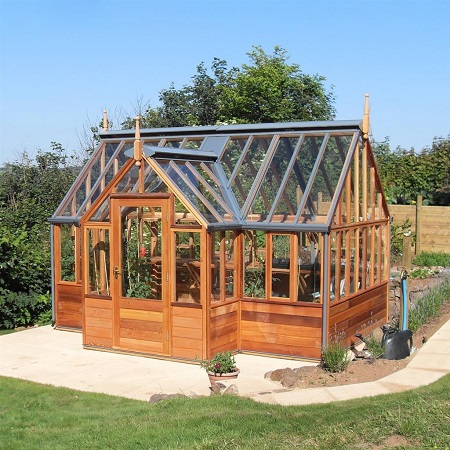
The gable style greenhouse has been around for centuries and is one of the most popular greenhouse designs in the world. The gable design features a sloping roof that forms a triangle at the top, with the highest point at the center. This design provides more headroom and allows for better air circulation than other greenhouse styles.
The origins of the gable style greenhouse can be traced back to the Victorian era in England, where greenhouses were a symbol of wealth and status. The wealthy aristocrats of the time would build elaborate greenhouses to house their exotic plants and flowers, which were imported from around the world.
The gable style greenhouse quickly caught on and became a popular design among greenhouse enthusiasts. As technology advanced, greenhouses became more accessible to the public and were used for both commercial and personal use.
Today, gable style greenhouses come in a variety of sizes and materials, ranging from small backyard hobby greenhouses to large commercial structures. They are used for a wide range of purposes, including growing plants, starting seedlings, and providing a controlled environment for research and experimentation.
5 Advantages of a Gable Style Greenhouse
More Headroom
The high, sloping roof of a gable greenhouse provides more headroom than other greenhouse designs, which means taller plants can be grown and more shelves and benches can be installed.
Better Air Circulation
The gable design allows for better air circulation than other greenhouse styles, which helps to prevent the buildup of stagnant air and reduces the risk of plant diseases.
More Natural Light
The steep angle of the gable roof allows for more natural light to enter the greenhouse, which means that plants receive more sunlight and can grow more quickly.
Greater Structural Stability
The triangular shape of the gable roof provides greater structural stability than other designs, which means that gable greenhouses can withstand high winds and heavy snow loads.
Easy to Install
Gable greenhouses are relatively easy to install and can be constructed from a variety of materials, including wood, aluminum, and PVC. This means that they can be tailored to suit the needs and budget of the individual grower.
5 Disadvantages of a Gable Greenhouse
More Expensive
Gable greenhouses tend to be more expensive than some other greenhouse designs, due to their triangular roof structure and increased building materials.
Requires More Space
The triangular shape of the gable greenhouse requires more space than other greenhouse designs, which may not be practical for growers with limited space.
More Difficult to Heat
Gable greenhouses have a larger volume of air to heat than other designs, which can make them more difficult and expensive to heat in colder climates.
Potential for Leaks
The sloping roof of a gable greenhouse can create potential leak points, especially if the roof is not properly sealed or if the greenhouse is exposed to heavy rain or snow.
May Require More Maintenance
The triangular shape of a gable greenhouse can make it more difficult to access and maintain the roof, which may require more frequent maintenance or repairs.
Related Articles & Free Email Newsletter Sign Up
Greenhouse Maintenance – How to Get 100,000+ Miles out of Your Greenhouse!
Gothic Style Greenhouses Add a Touch of Historical Beauty to a Property




Comment here